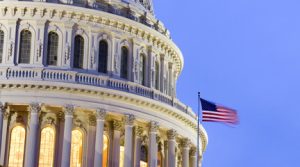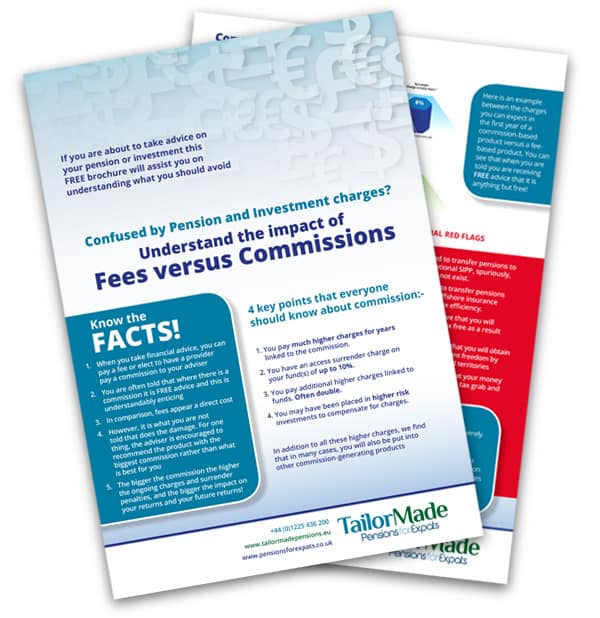
The U.S. debt ceiling is a crucial aspect of the country’s financial system, garnering significant attention and debate. As the nation’s debt continues to rise, the need to raise the debt ceiling is becoming increasingly vital — especially as the June 1, 2023 deadline for raising the limit looms ahead.
The debt ceiling, or debt limit, is the total amount of money that the United States government is authorized to borrow to meet its existing legal obligations, such as Social Security and Medicare benefits, military salaries, interest on the national debt, tax refunds, and other payments.
The debt ceiling is set by Congress, and when the limit is reached, the government cannot take on any more debt without raising the ceiling.
The federal government has been bumping up against a $31.4 trillion limit on its legal borrowing authority since late January.
Treasury Secretary Janet Yellen has warned that the department has begun resorting to “extraordinary measures” to avoid a federal government default and has urged Congress to act promptly to raise the debt ceiling.
The debt ceiling has been raised multiple times in the past, including three times under former President Donald Trump without conditions.
However, Congressional Republicans are now calling for spending cuts in exchange for a debt ceiling increase.
This has led to a standoff between the two parties, with the Treasury Department warning that the debate over the debt ceiling poses a risk to the U.S. financial position.
If the debt ceiling is not raised by the June 1st deadline, the consequences could be severe.
Potential Consequences of Not Raising the Debt Ceiling
According to Treasury officials, even the threat of the U.S. government failing to meet its obligations may cause harm to the economy by eroding household and business confidence, injecting volatility into financial markets, and raising the cost of capital, among other negative impacts.
Furthermore, it is estimated that not paying the debt could result in the loss of 750,000 jobs and lead to a recession.
Historically, the debt ceiling has been raised multiple times to accommodate the nation’s growing debt. Failing to raise the debt ceiling can have severe consequences that ripple throughout the economy and financial markets, including:
- Government Shutdown: If the debt ceiling is not raised by June 1, the U.S. government may face a shutdown. Without the ability to borrow more funds, the government would be unable to meet its obligations, leading to the suspension of various government services, furloughs of federal employees, and disruption in critical sectors such as healthcare, transportation, and law enforcement.
- Default on Financial Obligations: Failing to raise the debt ceiling would put the U.S. at risk of defaulting on its financial obligations. The government would be unable to pay its debts, including interest payments on Treasury bonds, Social Security benefits, military salaries, and other mandatory spending. Defaulting on these obligations would significantly erode the nation’s credibility, leading to a loss of confidence from investors and a potential downgrade of the U.S. credit rating.
- Market Volatility and Economic Downturn: The uncertainty surrounding the U.S. government’s ability to meet its financial obligations can trigger market volatility and have broader economic implications. Investors may become wary and start selling U.S. Treasury bonds, leading to a rise in interest rates. Higher interest rates would increase borrowing costs for businesses and consumers, hampering economic growth and potentially pushing the country into a recession.
- International Ramifications: The repercussions of a failure to raise the debt ceiling extend beyond domestic borders. The U.S. dollar is the world’s primary reserve currency, and any disruption in the country’s financial stability would reverberate throughout the global economy. Other countries may face increased borrowing costs, reduced export demand, and overall market instability, further exacerbating economic challenges worldwide.
- Loss of Government Credibility: A failure to raise the debt ceiling could damage the perception of the U.S. government’s ability to manage its finances effectively. It may raise doubts among foreign creditors, resulting in diminished confidence in the U.S. dollar as a safe haven currency. Moreover, the ensuing political and economic uncertainty could harm the country’s reputation as a stable investment destination, impacting its long-term economic prospects.
Potential Solutions and Congressional Action

To mitigate the consequences of not raising the debt ceiling, Congress must take action before June 1, 2023. There are several potential solutions, including:
- Raising the Debt Ceiling: The most straightforward solution is for Congress to authorize an increase in the debt ceiling. This would allow the government to continue borrowing funds to meet its financial obligations and avoid the potential consequences outlined above. However, raising the debt ceiling has often been a politically charged issue, with debates surrounding fiscal responsibility and government spending. It requires bipartisan support and coordination to pass the necessary legislation.
- Implementing Temporary Measures: In the absence of an immediate agreement on raising the debt ceiling, the Treasury Department can employ various extraordinary measures to extend the government’s borrowing capacity temporarily. These measures include suspending investments in certain federal employee retirement funds, halting the issuance of certain types of Treasury securities, or utilizing cash flow adjustments. While these measures buy the government some time, they are not a long-term solution and can only provide a limited window before more drastic consequences take effect.
- Negotiating Budgetary Reforms: Some policymakers argue that raising the debt ceiling should be accompanied by comprehensive budgetary reforms to address long-term fiscal challenges. These reforms may involve measures to control spending, review entitlement programs, or explore avenues for revenue generation. However, negotiating and implementing such reforms can be a complex and time-consuming process, requiring consensus among lawmakers with differing policy priorities.
- Bipartisan Compromise and Collaboration: Resolving the issue of the debt ceiling often requires bipartisan collaboration and compromise. Both parties must find common ground and work together to ensure the government’s financial obligations are met. This may involve negotiations, concessions, and a willingness to prioritize the stability of the nation’s economy over partisan differences. Constructive dialogue and bipartisan cooperation are crucial in reaching a timely resolution.
Snapshot: Q & A:
What is the Current U.S. Debt Ceiling Limit?
The current U.S. debt ceiling limit is $31.381 trillion as of May 2, 2023, according to the New York Times.
The United States officially hit its debt limit on January 19, 2023, prompting the Treasury Department to use accounting maneuvers known as extraordinary measures to continue paying the government’s obligations and avoid a default.
How is the U.S. Debt Ceiling Limit Determined?
The U.S. debt ceiling limit, the maximum amount of outstanding federal debt the U.S. government can incur, has been determined by Congress since 1917.
Congress set the first overall debt limit at $45 billion in 1939, and the ceiling has been raised or suspended multiple times in the years since.
The borrowing cap is currently set at $31.381 trillion; however, lifting the debt limit does not actually authorize any new spending – it simply allows the United States to spend money on programs that have already been authorized by Congress.
How Does the U.S. Government Use the Funds it Borrows?
The U.S. government uses borrowed funds to finance its budget deficits, which occur when the government spends more money in a year than it brings in through revenue.
The federal debt, also known as the national debt, is the total amount the government still owes from current and past deficits.
To finance the federal debt, the government sells Treasury marketable securities, such as Treasury bills, notes, bonds, and Treasury Inflation-Protected Securities (TIPS).
Anyone can buy a bond or other type of security, and the government pays interest on the borrowed funds.
The government uses the borrowed funds to pay for a wide range of programs and services, including Social Security and Medicare benefits, military salaries, interest on the national debt, tax refunds, and other payments.
What “Extraordinary Measures” Can the Government Take to Avert a Crisis?
The Department of the Treasury can use so-called “extraordinary measures” to keep the federal government from defaulting on its debts – these are temporary solutions that can delay the restrictions imposed by the statutory limit by up to several months.
The Treasury can use several measures, including suspending investments in certain government funds, redeeming Treasury securities held by government trust funds, and suspending the issuance of new securities to state and local governments.
The Treasury secretary can also find ways to shift money around government accounts to remain under the borrowing cap, essentially buying time for Congress to raise the cap.
However, delaying the debt limit does not come without costs – suspending certain investments can cost the federal government money, and delaying payments to government trust funds can affect beneficiaries.
While extraordinary measures are only a temporary solution to a debt ceiling impasse, they can often delay the restrictions imposed by the statutory limit by up to several months.
However, these measures are not a long-term solution, and Congress must ultimately raise or suspend the debt ceiling to avoid defaulting on the nation’s obligations.
Addressing the U.S. debt ceiling is a complex issue that necessitates prudent decision-making, responsible fiscal management, and a focus on the long-term economic well-being of the nation.
With the June 1 deadline fast approaching, it’s a critical juncture for policymakers to demonstrate leadership and work towards finding a viable solution that ensures financial stability, secures the nation’s economic future, and averts potentially disastrous consequences.
###
The views expressed in this article are not to be construed as personal advice. You should contact a qualified and ideally regulated adviser in order to obtain up to date personal advice with regard to your own personal circumstances. If you do not then you are acting under your own authority and deemed “execution only”. The author does not accept any liability for people acting without personalised advice, who base a decision on views expressed in this generic article. Where this article is dated then it is based on legislation as of the date. Legislation changes but articles are rarely updated, although sometimes a new article is written; so, please check for later articles or changes in legislation on official government websites, as this article should not be relied on in isolation.
Related Stories:
- Denmark’s Debt Ceiling: A Model for the U.S.?
- The American Pension Crisis: CA, IL Among the Worst
- IMF: Global Economy Likely to Rebound, but UK’s Will Shrink in 2023
- UK Prime Minister Rishi Sunak Steps into Office Amidst Economic Crisis
- 2023 Rings in with Markets Eyeing the Fed’s Next Move
Share this story






